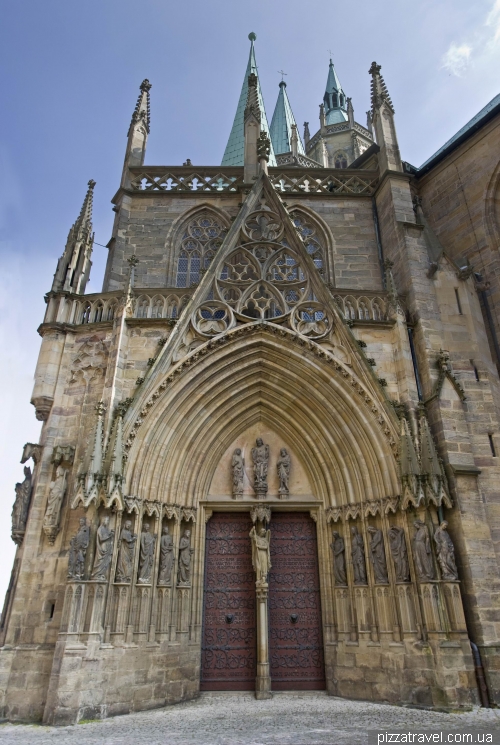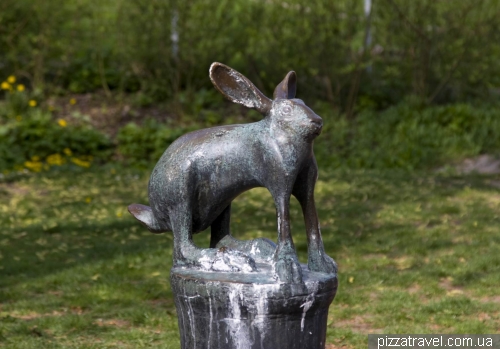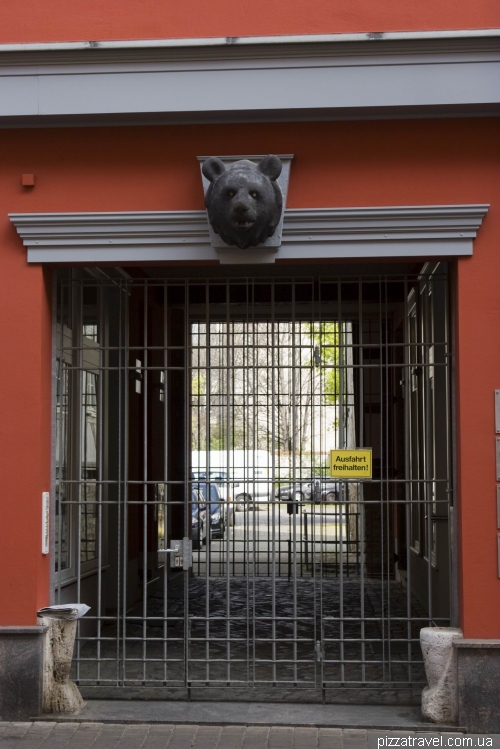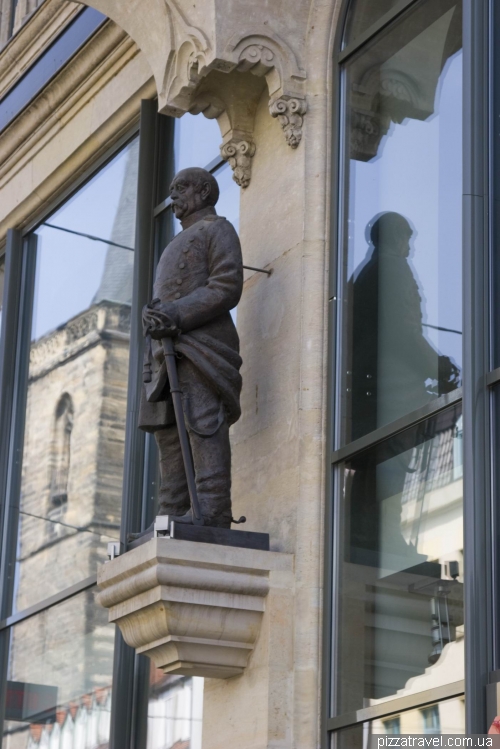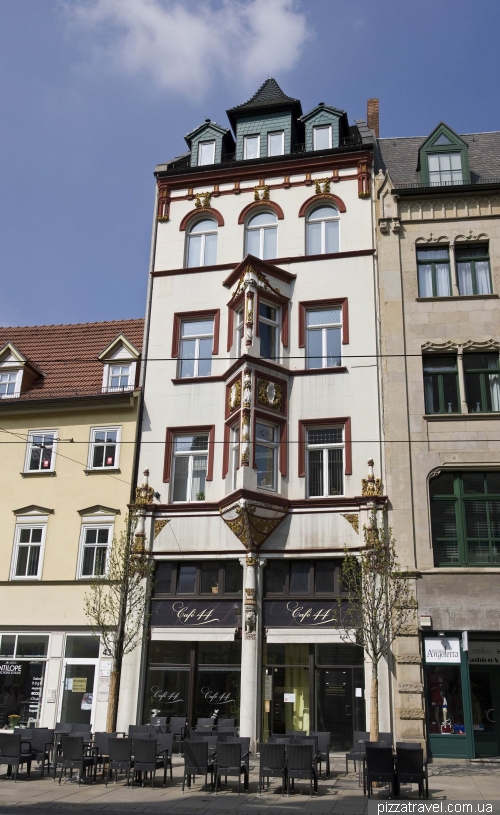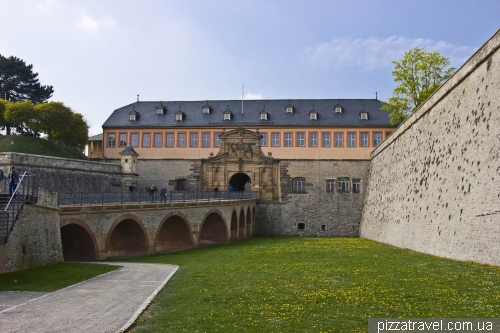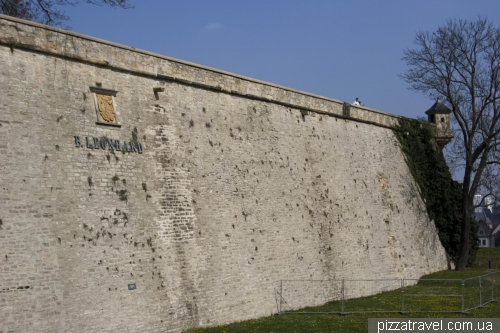Erfurt is the capital of Thuringia, city with 1270 years of history. Due to the excellent location, at the crossroads of trade routes, it was well developed in the Middle Ages. The town gained wealth and political influence through the trading and export of a blue dye gained from the woad plant. Due to the importance of the city there was a constant struggle between the bishops of Mainz and local rulers. In 1352 Erfurt received the status of free imperial city and in 1430 joined the Hanseatic Trade Union.
In 1392 in Erfurt opened the third oldest university in Germany. From 1501 to 1505 here studied Martin Luther, reformer and founder of the Lutheran Church.
We moved around the city using these two maps. Center is compact.
The main attraction of the city is Cathedral Square with Erfurt Cathedral and Severikirche.
To take best pictures you need to come here early in the morning. In the Middle Ages the area was smaller, but because of the fire in 1813 during the war with Napoleon's troops, a few rows of houses were burned. Those which now surround the area create a beautiful ensemble.
Near the square, on the hill stands Petersberg fortress, but it is better to climb there in the evening, when the sun will shine from different side. Wide staircase leads to cathedrals. The main cathedral is very large and even consists of 2 parts. It received present appearance in XIV - XV centuries. Inside stored quite a large collection of art objects.
Impressive stained-glass windows (XV century).
Severikirche (Church of Saint Severi) smaller in size, but still is one of the most important Gothic buildings in Germany. The most interesting here are: Here the most interesting is a huge organ, sarcophagus of St.Severi (1365) and many tombstones on the floor. The bell, located in the middle tower (1497) is the largest medieval church bell in the world.
From Cathedral Square we went in the direction of Kraemerbruecke bridge. Along the way we met the Church of All Saints (1221 - the end of the XIV century).
Next square is Fish Market (Fischmarkt). It is small, but has many beautiful buildings, as well as City Hall (1711 -1720).
Note small sculptures on the houses.
Town Hall can be visited for free, don't miss this opportunity.
There are small squares on the both sides of the bridge.
The bridge from inside looks like an ordinary street.
Therefore, you have to look at it from outside.
River, that passed under the bridge, creates beautiful cityscapes.
On the other side of the bridge is a very cozy Small market square. Here stands Ägidienkirche church. Upstairs there is an observation deck (1.5 euros), but it does not work during services at the church.
Next street after the bridge and the square is Futterstrase. There are several beautiful buildings here and one particularly beautiful at the intersection with Johannesstrase.
Here you can turn right and walk to downtown Anger.
From here, trams run in all directions and we went to the EGA park on tram number 2. Entrance fee to the park is 6 euro. This landscaped park, exhibition center and botanical garden in one. It is built on the area around the old Kiriaksburg fortress. Walls and buildings of the fortress are now integrated into the landscape of the park.
There is a huge playground and a small zoo for children.
One of the towers of the fort converted into a viewing platform which offers a great view of the park and Erfurt.
There is unusual fountain in the park, it can be controlled.
We leaved the part through the lower exit leading to Goethe square and from there went on a tram back to center. Stopped at the beginning of the Anger street near the Hirschgarten (Deer garden) square. On this square stands one of the most beautiful buildings in the city Chancery. It became famous after 1808, when it hosted the Erfurt Fuerstenkongress. Since the end of September for two weeks Erfurt became a center of world politics. Napoleon Bonapart organized here meeting with Alexander I for the conclusion of the Franco-Russian alliance.
Next went for a walk down the Anger street. Despite the fact that it is the central street of the city it is quite deserted, as most tourists walk in the old town. In the past centuries rich people lived there and they have left many beautiful buildings.
From Anger on the tram we reached the Cathedral Square. The last place for today is Petersberg fortress (XVII century).
Don't miss the opportunity to taste Thüringian sausage (Thuringen bratwurst). On the square near the tram stop there is a place where they cost 1 euro. Don't know why, but Germans cosider sausages from this region the best in the country. I do not see the difference, they all tasty :)
Fortress meets tourists with massive and well-preserved gate.
To estimate the height of the walls just compare them with people on the top.
Castle is perfectly preserved. It's pretty big and you need at least 1 hour to get around its perimeter.
The walls offer beatifulul views of the city and the Cathedral Square.
Getting there: Erfurt has a small airport. Tram 4 connects it with the center. The best option to reach the city is by train, find schedule in bahn.de.






